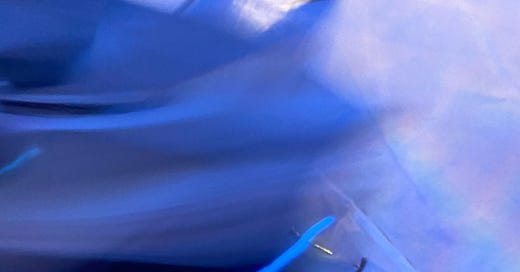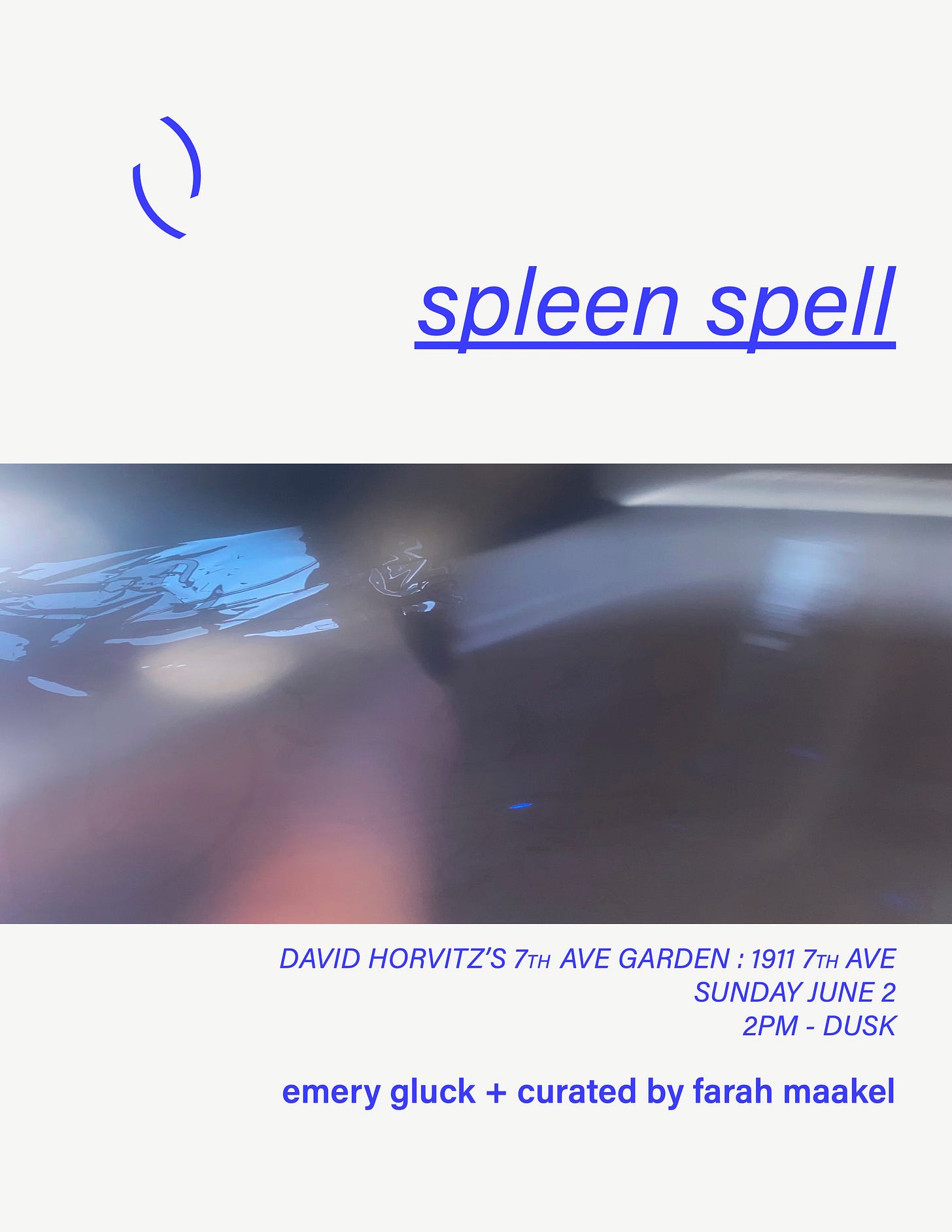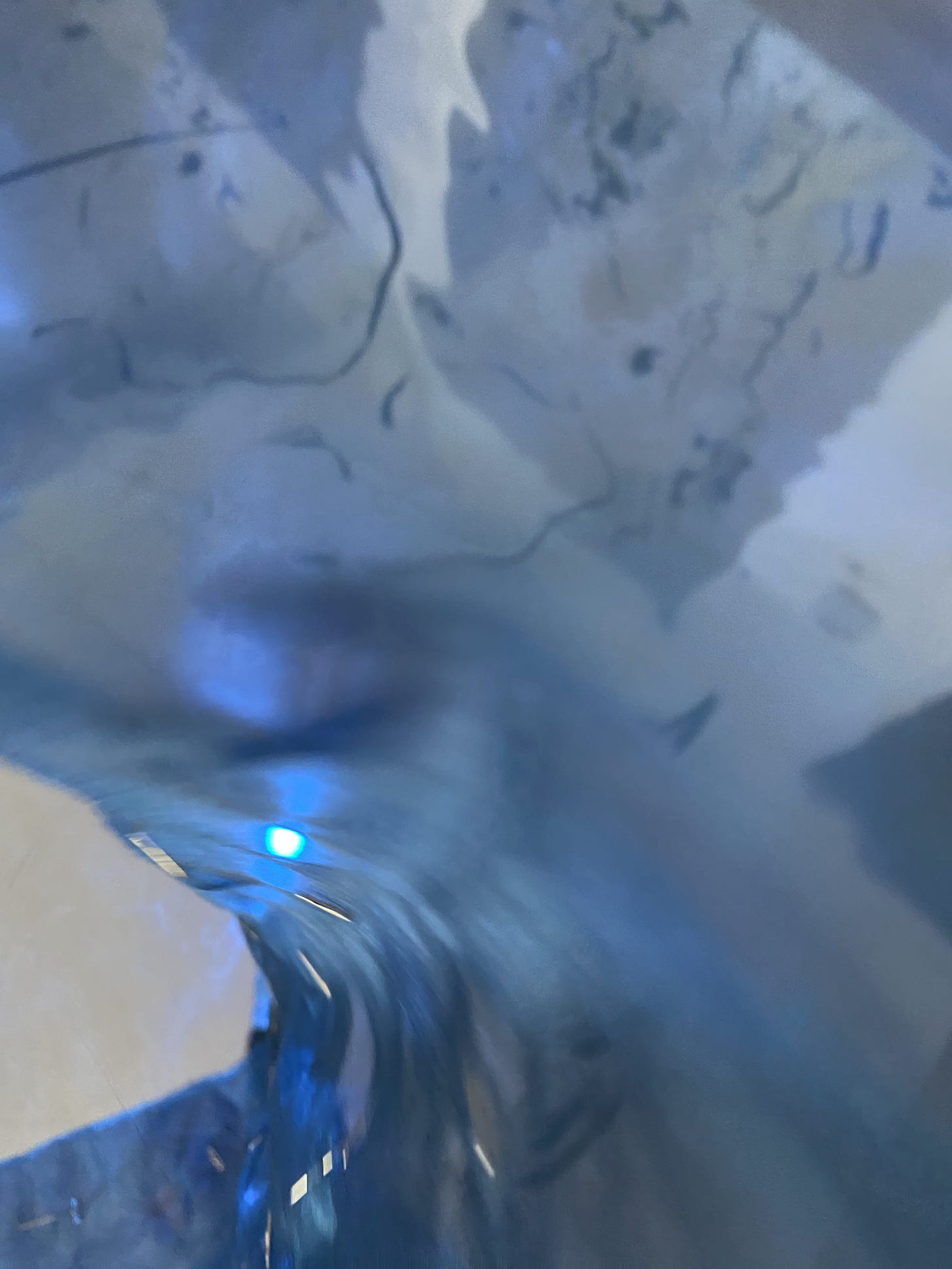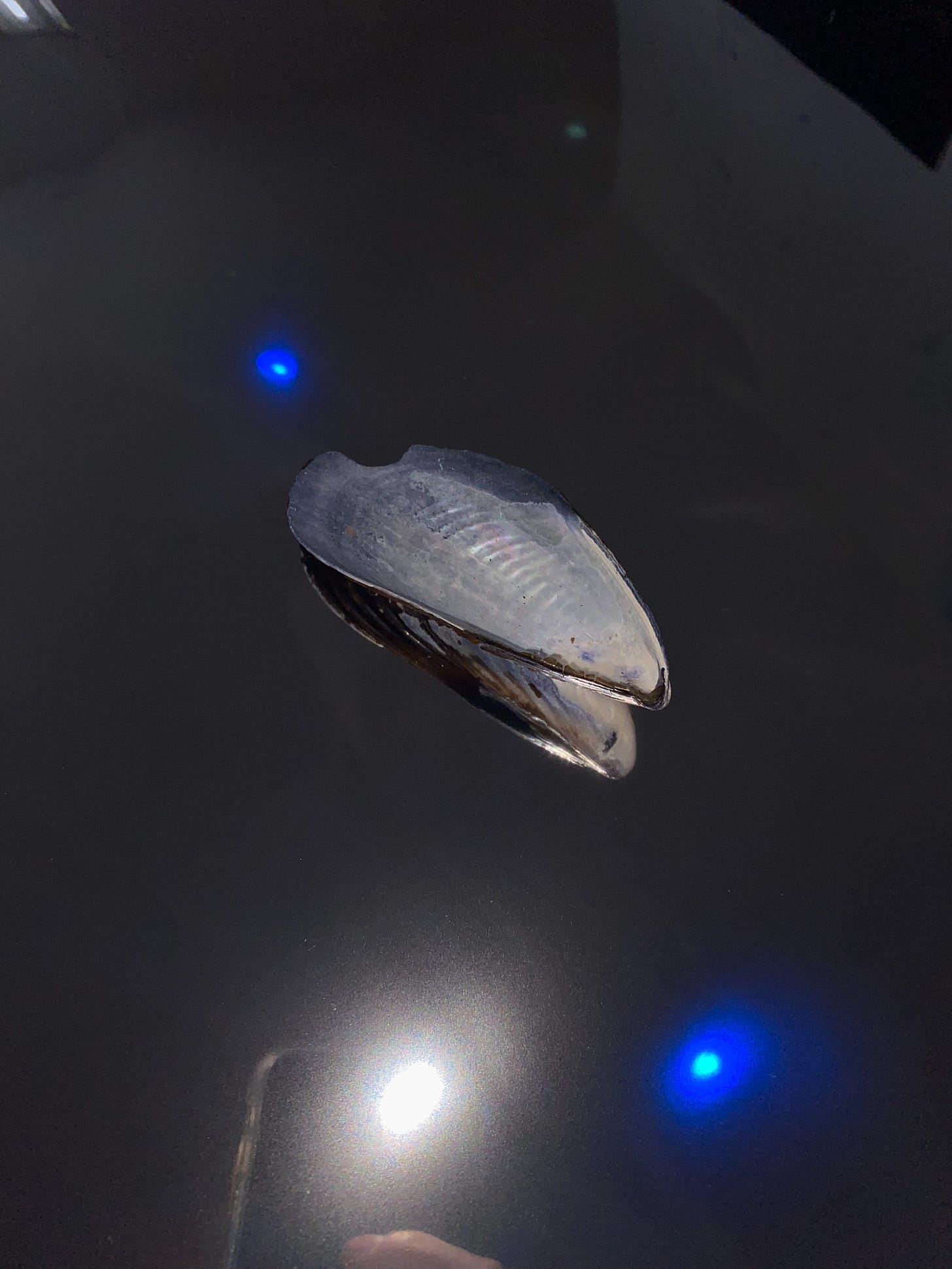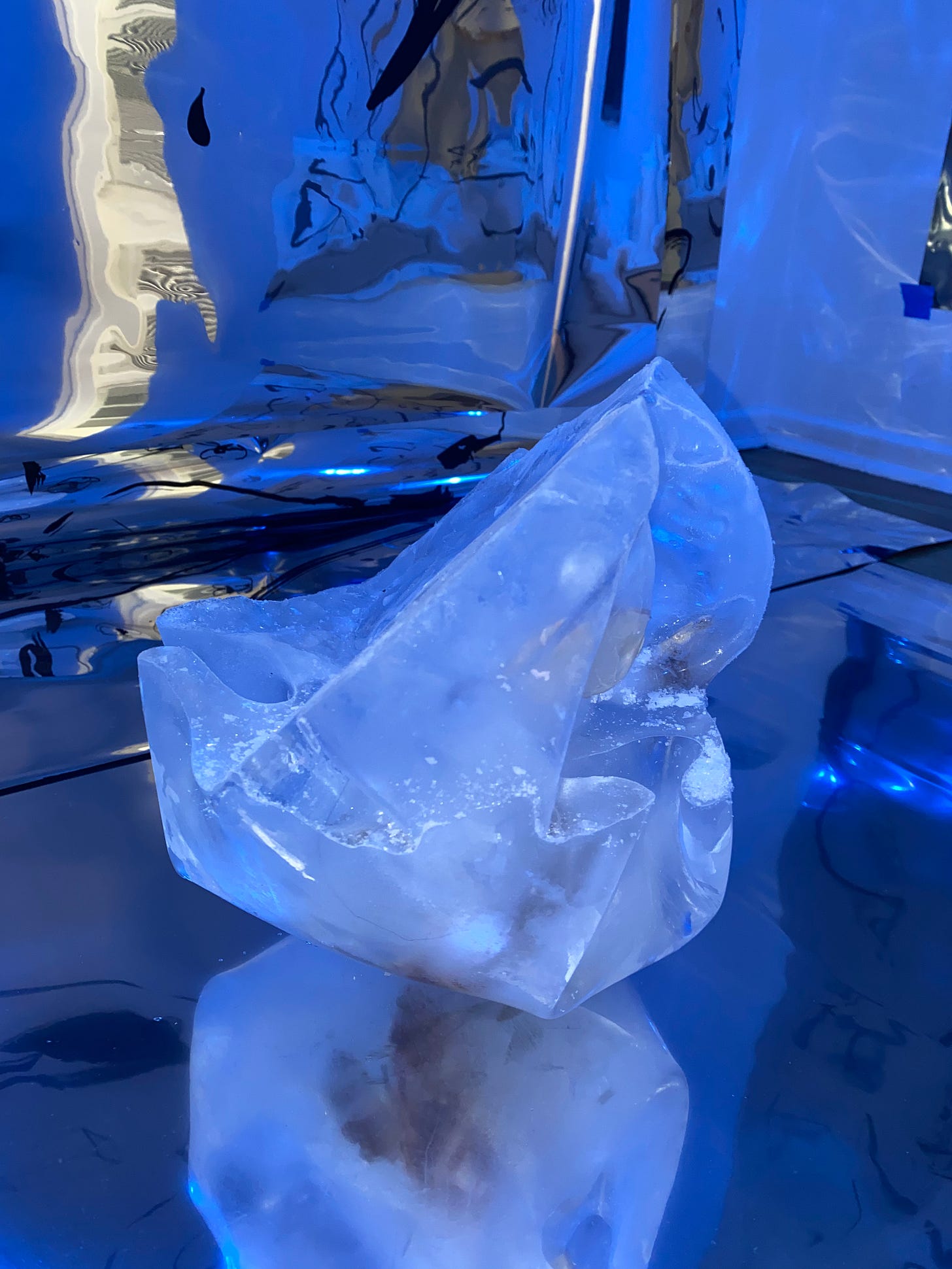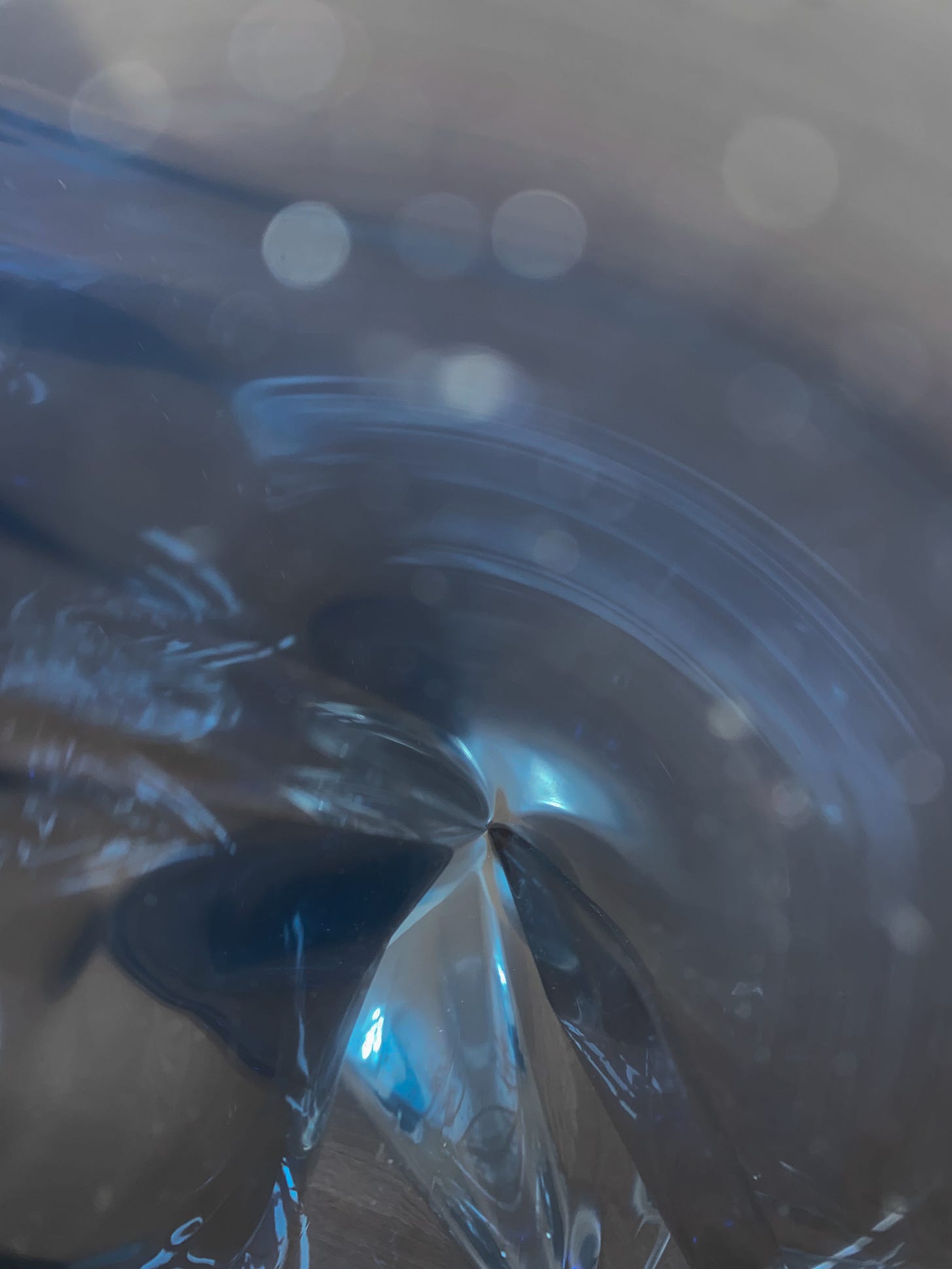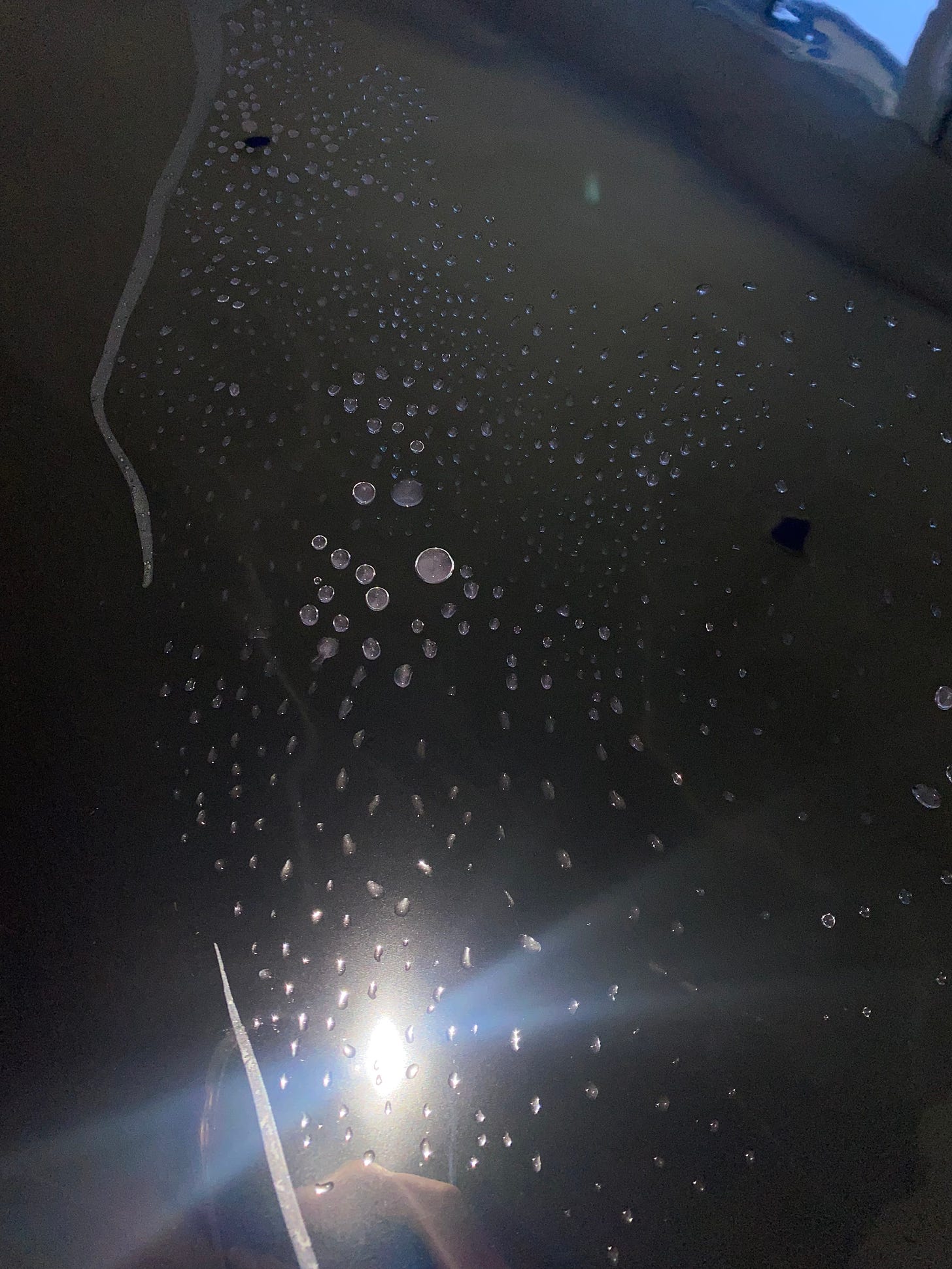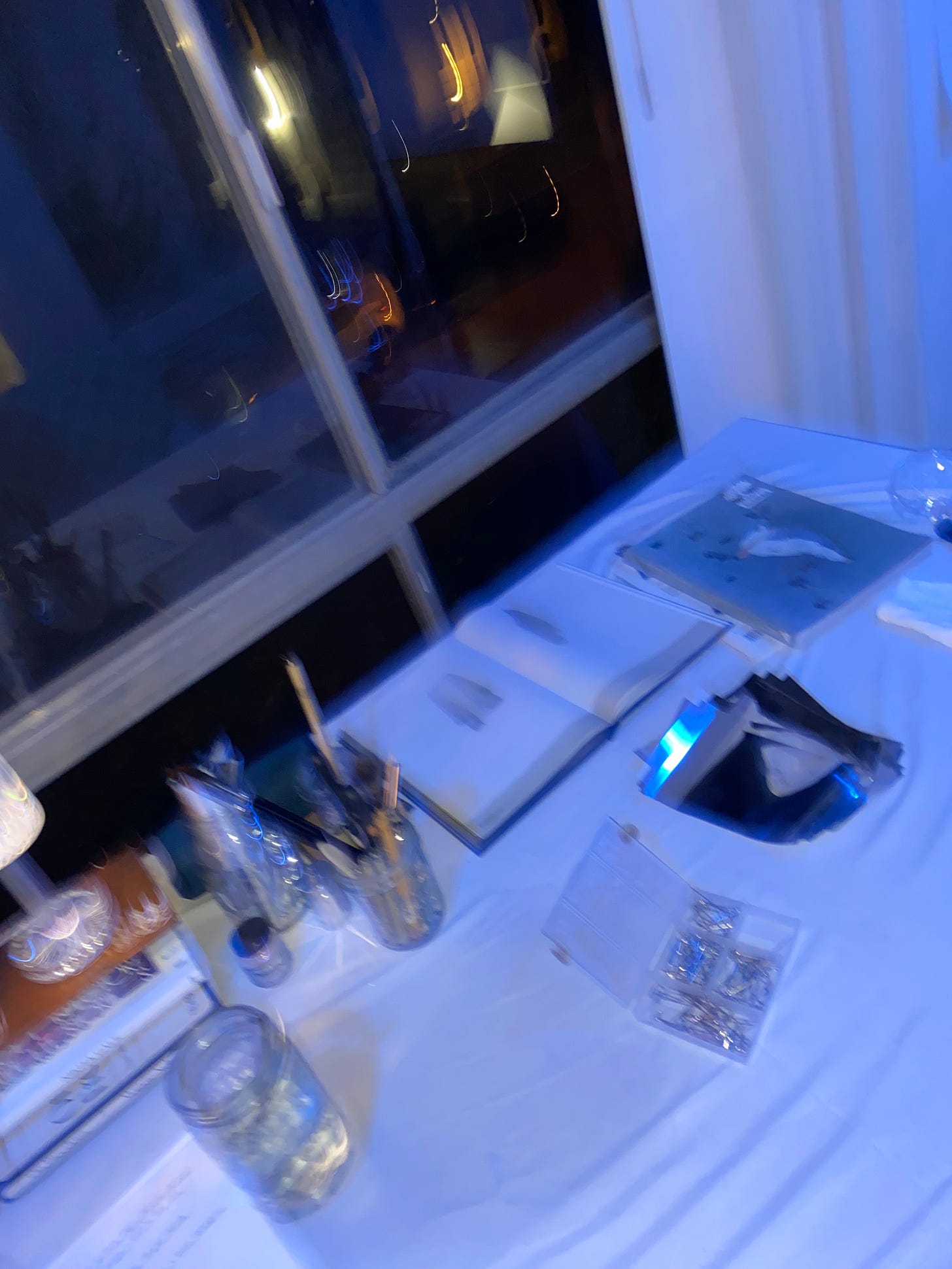Emery Gluck is one of my favorite artists. Lucky for me, she is also my friend. The first time we met we entered a stream of pure consciousness together. We spoke about the abstract, the ephemeral, and the invisible natures of living.
Emery’s art practice flows through a kaleidoscope of mediums. From drawings, ice, video, to even the culinary. Her work is transcendent, immersive, and breaks the confines of the traditional artwork/viewer relationship.
Her work encourages viewers to step inside.
Emery’s upcoming solo show Spleen Spell curated by Farah Maakel will be this Sunday June 2nd at David Horvitz’s 7th Ave Garden in Los Angeles from 2pm -dusk. A one day only event filled with ice, giant mirror-reflective drawings, and the mysticism of a garden tucked in the heart of the city.
To celebrate, I interviewed Emery to discuss the inspirations behind her show, why she chose water as a medium, and the power we all have as a witnesses.
Naturally, we ended our conversation talking about death.
But, in a supremely beautiful way.
.・゜゜・
Halleta: What was the starting seed of your show?
Emery: It began with a shared love of water between Farah and me, the curator. How poetic water is, how much it holds. How when it's frozen it holds time. Different dimensions of time.
I started thinking a lot about water as a medium of invisible forces. I was thinking about what's invisible. Time, relationships, emotions, the force of the moon. All of these things are made visible in water. The tides, the tears that pour out of us, temperature, heat, sweat. An ice cube melting shows time passing.
Farah and I both connected over the fact that we cry when we're angry. We were discussing all of the things water is. How it can be destructive, it can flood. How in that destruction it can clear something out.
It also cleanses. It’s how we clean ourselves, refresh ourselves, and hydrate. It’s how we survive, how we live, and how we travel. It's what connects different masses of land. It’s literally what our bodies are made of. It's just so much.
Working with water is a cool and interesting way of connecting with the audience, because everyone knows what the water cycle is. If you're staring at a piece of ice melting outside of a freezer, you know that it's changing. You know it's undergoing a change of state. Then as you watch the liquid sit there, you know the liquid won't stay there forever. You know it will evaporate and become part of the atmosphere.
Since art is something that's not widely taught, it’s cool to begin working with something that is taught to every third grader on the planet, pretty much.
Halleta: It’s kind of crazy how normalized our understanding of the water cycle is, because hearing it spoken, I’m like, that’s crazy..
Emery: It’s kind of sad because the poetry of it isn't taught. Just the science of it.
Halleta: What influenced the title of the the show, “Spleen Spell”?
This idea of being a bit bored. Or being a bit melancholy. Witnessing change is kind of sad. It's difficult. That's what the word "spleen” is in literature. It's this feeling of boredom or dissatisfaction and melancholia.
But, also the garden has quite a mystical feeling. The ice has a mystical feeling. The iridescence of the materials I use has a mystical feeling. It all puts you under this kind of spell. What happens when you're under a spell?
Farah and I were talking about the garden as a fluxus. Something that is in flux. It's changing all the time. There's an art movement called “fluxus”, which was in the 60s and 70s, and it was artists making work that had a more political charge. It was art that was more about the process than the finished object. This is so much about the process. It's experimental performance.
Halleta: I’m so touched by this idea of water holding things and us having our own kind of water cycle. I’m understanding how water is a carrier. It's a shower of things. What did you find yourself putting in the water?
Emery: I really like how at the beginning of the show you can't see what's inside the ice. I keep it foggy on purpose. It’s only in time passing that you can see what's inside.
I’m mostly using the shells of different mollusks. Clams, oysters, mussels. In the garden there was just this pile of shells and they were so beautiful. This gorgeous iridescent blue — which, you know, is my favorite thing in the world. I took some and I glazed them with an iridescent violet. Then I've been freezing them with chains and strips of silk that I'm threading needles through. I'm creating different entanglements inside the ice. They wrap and spiral around each other. They’re tangled. I want the viewer to experience their own entanglement.
I was surprised at how much I loved working with the shells. Because I started to see them as eyes and portals. As I started drawing them, I was like this is just an eye! This is the same shape as an eye. Then I started drawing my own eyes. Now, almost every drawing has my eyes in it.
I see myself in the work and then the work reflects myself back to me. It’s looping. It's cycling. Just like the water cycles. We're communicating.
My hope is that this energy will then carry over for the viewer and they'll experience that relationship with the work, too. Not as viewer/artwork and subject/object — but subject/subject.
Halleta: What of yourself did you realize you were fusing inside of the ice?
Emery: Sadness, frustration, beauty, transformation. I’ve been in this mode of sheer devotion because I have to spend every extra hour working. There's some kind of transformation that's happening with me and my studio practice that is going inside the ice. Even the act of putting hundreds of needles into this beautiful silk. There's something really meditative about it, but it also violent. There's a certain pain that I think I'm processing that's going into it. It's been really emotional working on this.
Halleta: What do you consider an invisible force?
Emery: I think it's seeing the aliveness of things. Seeing the connections. The invisible web that we are all living in connected to each other. Nothing is happening individually. It’s being able to see the dynamics that go on. Beyond the facade of the presentation.
Halleta: In your notes about the show you mention the “contract of witnessing” — what is that contract? And as a witness of something, do you have a sense of control? And does that control lie in awareness? As a witness do you contribute to a sense of force?
Emery: Oh, I love this question. There is a level of control the viewer has in the way the art looks. Their reflection is going to become part of the drawing they're looking at. The heat of their body around the ice contributes to the speed that it melts. There is a level of control that they have that they are not in control of.
The level of awareness you have of your presence does begin to transform your understanding of the dynamics around you. And it does begin to make something invisible more visible. But, you have to practice. I'm hoping to make work that encourages people to tap in.
Halleta: Entering a longer contract of witnessing, it also reveals the things that you didn't at first see.
Emery: What's cool about the ice is that what’s invisible, what’s frozen in the core of the ice, eventually becomes visible. The secret of what's inside the ice is revealed at the edge. But you have to be there to see it. You have to be there to witness it, otherwise, you miss it. It falls away. That water evaporates. The ice triggers our desire for control, but the contract asks the viewer to let the ice lead them.
Halleta: It’s like, what changes the more you look at something?
Emery: The longer you look, what do you see?
Halleta: It’s interesting to think of how whatever is inside of the ice is frozen in a position inside of it. Then as it goes through this process of revealing itself, it falls. The truth has fallen. Its form can rest. I think something's interesting in allowing the truth to rest a bit.
Emery: Mmm yeah, like let it air out. The ice has this rigidity, it's really holding on, you know? I really relate to that. As much as I embrace change, it's still really difficult. I have a tightness in wanting to hold onto things. The amazing part of being an artist is I get to use my studio practice to work on things.
I like the idea of letting the truth rest. Letting it breathe. It doesn't have to be held actually. With this show, there's a new layer of honesty in the work. There's a rawness just because of the speed at which I've had to work that has opened up a new dimension of honesty. Like with myself and in what I'm making. That's been interesting to witness.
The other day we were just talking about being sad about ephemeral moments leaving. How life is just this amalgamation of amazing beautiful, fleeting moments.
Halleta: Series' of ice!
Emery: That's what it feels like. Life is changing states the whole time. So it's like this fallacy of structure. It's a reminder how all of these structures, all these systems that we exist in are totally made up. The only thing that's real is how things are cycling and changing.
Halleta: It also gives a bit of grace to the human condition. Of not wanting to go through change. Understanding how even a natural element like water tries to hold on. Seeing ice is such a display of the agony of change.
Emery: Right, and I think we’re living in a moment where something has broken open. I think Palestine has freed us from any prior beliefs of this system working.
Halleta: As a multimedia artist, what opens for you through each medium?
Emery: They just open. They open a channel through. I do feel when I'm working it’s just some other intelligence coming through my hand. I let my hands do their thing and after I can step back and think about it. Make the connections and see what's going on. But, it's very intuitive.
Halleta: Experiencing your work I feel like I get to witness the universe at large.
Emery: That's the best compliment ever.
Halleta: But, it’s also like being inside of it. I had this mini-planetarium growing up that that could project the stars in your room. I was so obsessed with it. It almost feels like that. Your art projects the constellations of living.
Emery: Oh my god! I’ve been thinking about constellations a lot. The constellations of interaction. And stars, I've been drawing a lot of stars. I just remembered the first time I saw a sky super packed, like so densely packed with stars
Halleta: You remember the first time?
Emery: I was older -- it was really, really more stars than I'd ever seen ever in my life. I remember understanding God in that moment. I just felt that connection to the universe. I would actually love to talk to the viewers at the show and ask them about the first time they saw sky super full of stars. Because oh, my God, what a crazy thing to see.
Halleta: When you describe it like that, I do remember the first time. It almost felt like being pricked, not with needles, but with light, because the light is almost angular. It was piercing me, but it wasn't painful. It was just like, texture. The texture of stars. All of this texture.
Emery: I remember feeling like I died. Because I felt like I was in space. But, it wasn't bad or scary or painful. It was amazing. Super soft. I felt so soft. And you know, that's death.
You used the word projection too, which I think is interesting.
Halleta: You're the projector for us. We see what you're seeing. We get to be inside of the way you're seeing everything. This is Emery's projection of the world and the universe. In detail and at large. Through your art, we can enter that.
Emery: What's cool is going back to the materials, these materials create natural projection. Like when light hits the paper that I use, it creates projected light. It dances around the space. The ice too. When it interacts with a mirror it projects onto a ceiling, wall, or what it’s near.
So, yes, this work is a projection of me and in this show it will be a projection of whoever is looking at it, and the space surrounding it.
It's a projection of light and something that is invisible.
Halleta: The materials have something to say about life, too. The ice has something to say, even the paper, or something through the paper. The invisible wants to say something through it, too.
Emery: 1000%. Exactly yeah, and I just get to display it.
To keep up with Emery:
And Farah:
.・゜゜・


